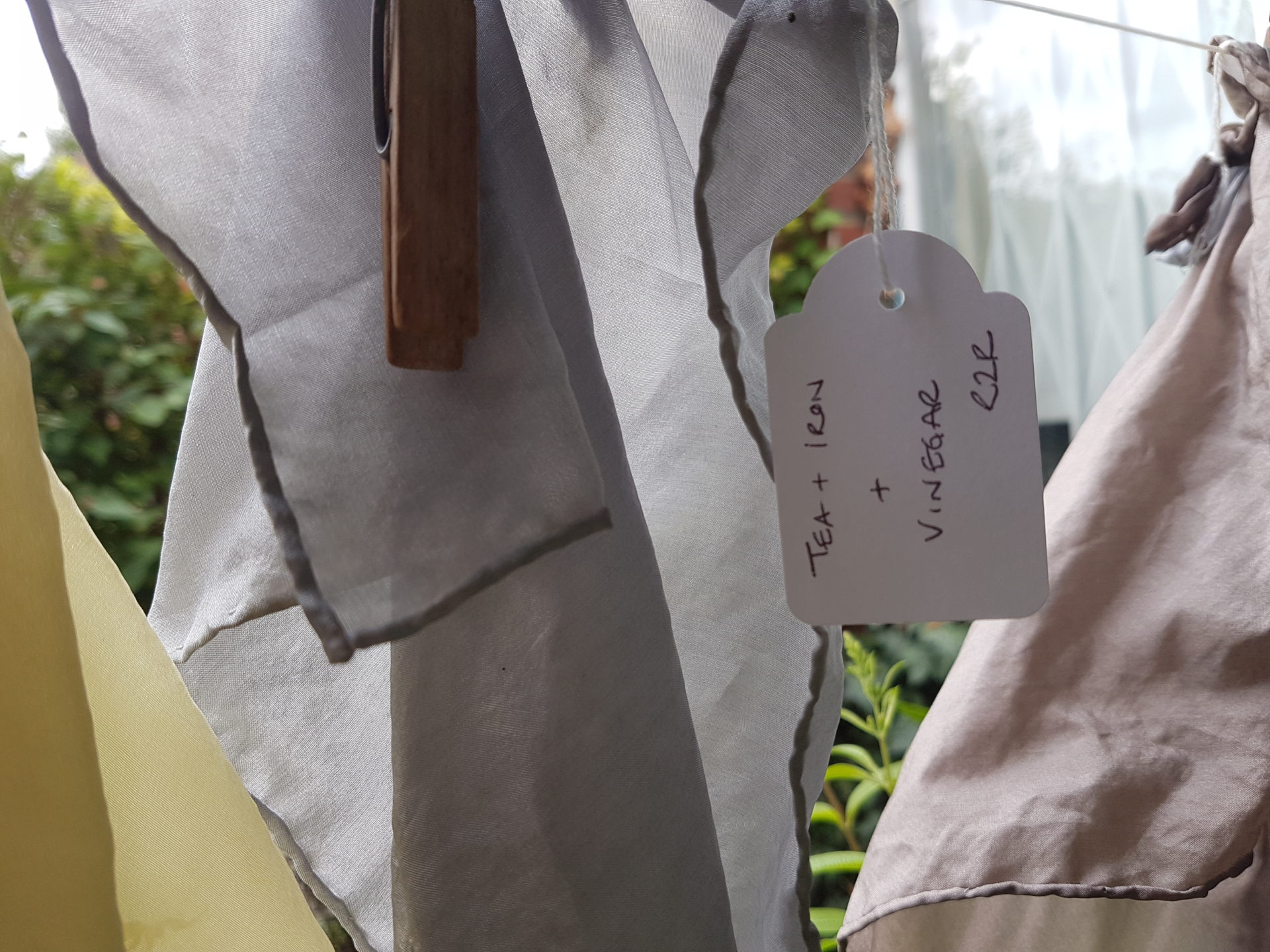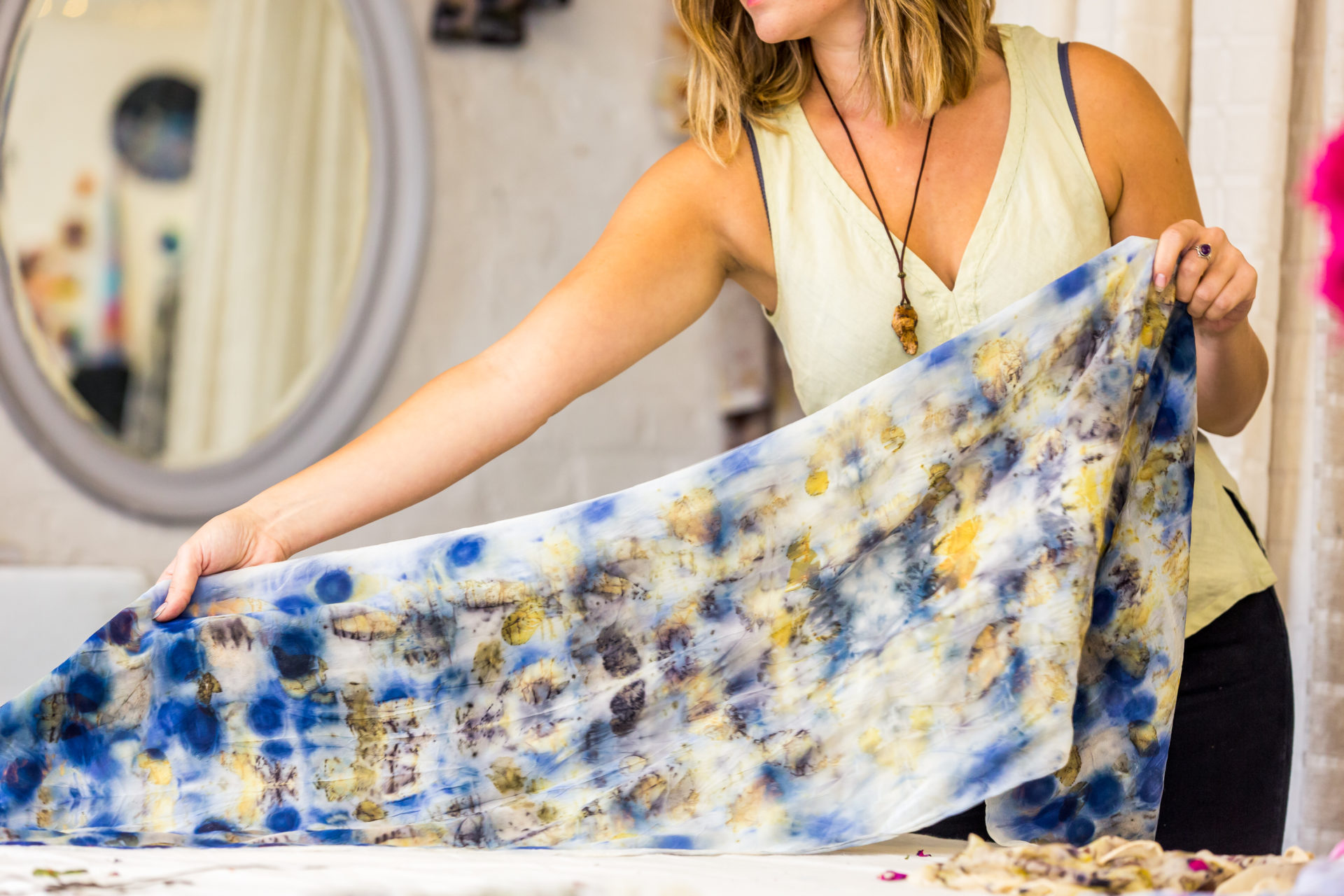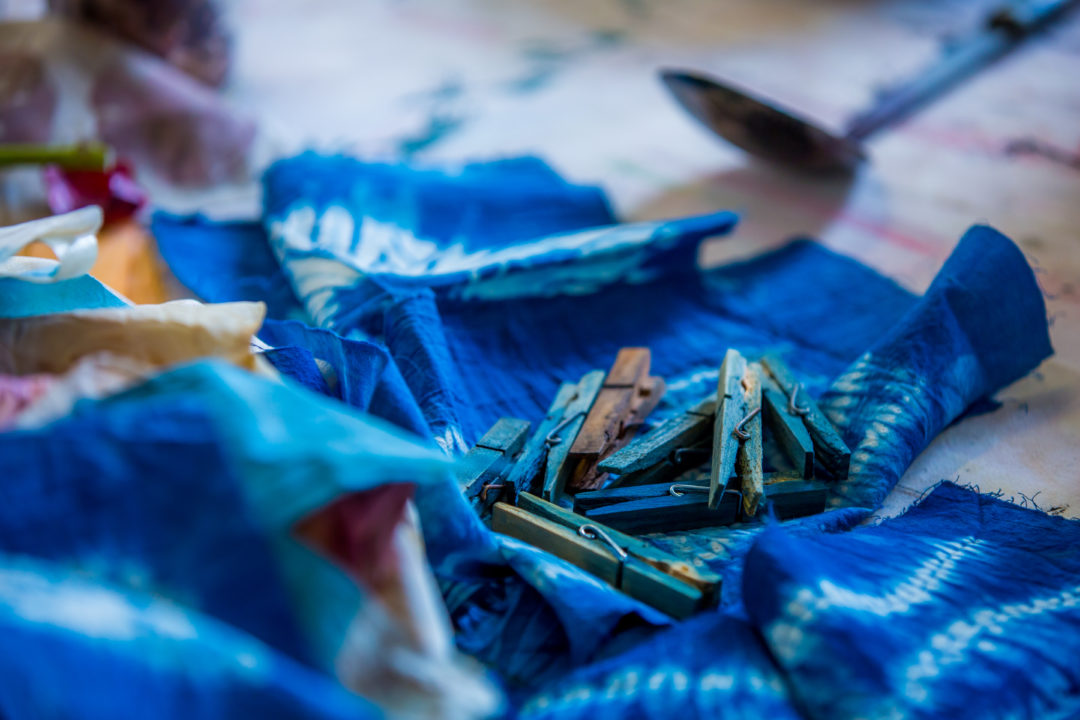There are several natural dye techniques that can be used, to extract natural pigments from natural dye stuffs like roots, bark, leaves, floral or food waste and foraged windfall. Depending on the desired outcome will depend on the chosen technique.
Once a process, dye and fabric have been chosen, the fabric will need to be scoured. This means to thoroughly wash the fabric in stainless steel pots with PH neutral soap and soda ash. It is different to a normal wash in the machine as it removes all of the grease and dirt that new fabric contains. These must be removed in order to get an even coverage. Most of the techniques involves scouring and most dyes require pre-mordanted fabrics. Apart from indigo which does not require fabrics to be pre-mordanted due to it’s chemical structure that naturally bonds to the fabric.
Some of those processes include:
Bundle-Dyeing
Kylie started by focusing on the bundle-dye process which is a water saving, natural dye technique. It involves pre-mordanting the fabric with potassium alum, a natural metallic salt, that ensures the pigment adheres to the textile sufficiently. This is a beautiful way of capturing patterns flowers and plants onto cloth, by rolling and gently steaming the petals between the textile.
Indigo & Shibori
Indigo is a fascinating natural dye that survives in a living vat. Kylie uses organic indigo from El Salvador and an organic henna vat. It takes patience to understand and maintain the indigo vat. The idea is that the PH should be around 12 to dye cotton and a PH of 9 to dye silk. If the PH is too low then the indigo vat may not dye properly. It will also not dye properly if the indigo is not reduced, due to an excessive amount of oxygen inside and not enough reduction material. When the fabric has been dyed with indigo, it will first appear as a yellow, which turns to green when exposed to oxygen, before changing to a fantastic indigo blue – this is called oxidation.
Shibori can be as simple or as difficult as you make it. From stitching, to binding and clamping, with layering and capping to get different shades of blue combined with patterns. With a variety of different shibori techniques and patterns the results are endless. Shibori is particularly effective with indigo because it doesn’t penetrate the fibres so easily, resulting in a distinct resist pattern.
Natural Dye Baths
Dye baths are different to an indigo vat in the sense that, they generally do not need need any additives in order for the dye to become soluble in the water of the dye bath. Most dye stuffs will require a mordant to be as colour fast as possible. It can be a slow process to extract the natural dye pigments from botanical matter. Dye baths are great if you are looking for a solid, even colour and the results can be extremely rewarding.
Modifying colours
It doesn’t end there with natural dyes, you can modify colours or combine techniques. Some dyes are particularly PH sensitive, if you add an alkaline or acidic modifier, it could dramatically change the colour. Some modifiers like copper and iron, can be used as a pre-mordant.
The after care is also important, once finished with dyeing, the fabric should be neutralized and washed with a PH neutral soap in order to fix the colour further to the cloth.

Intuition
Since graduating in printed textiles, Kylie has a keen eye for colour and detail. She naturally let’s her creativity, knowledge and design skills lead her on a journey of sampling. Testing, documenting and persevering until an array of colours are created. Having a portfolio of dye samples, allows her to make educated decisions when working towards a brief. Natural dyes have many different variables that could effect the end result. Where the plant is grown, what water is being used, and so on. There is a combination of intuition and knowledge as a natural dyer.










